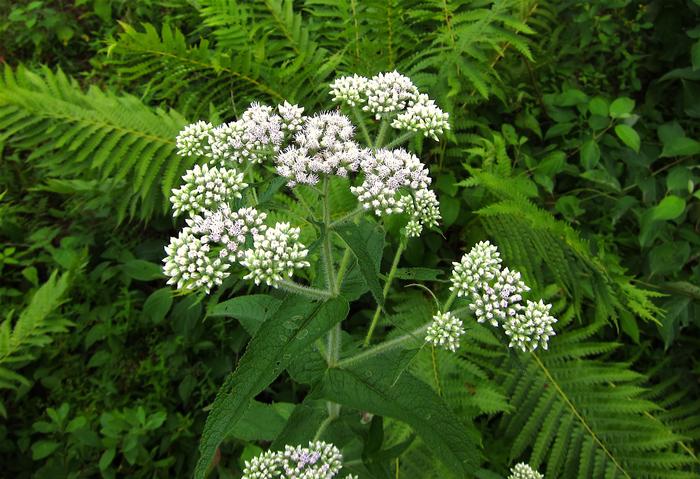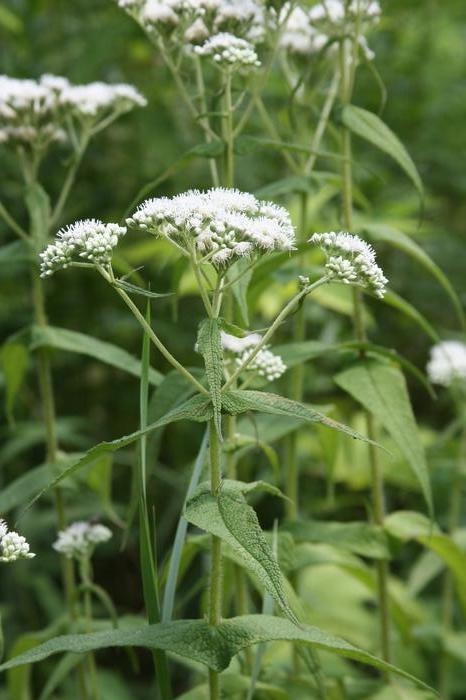General Description
Bloom Description: Typical aster-family flower arrangement with many small white flowers that can look like a fuzzy cloud from afar. Blooms June to October.
Growth Habit & Shape: Creates colonies in clumps.
Soil Preferences: Prefers a moist to wet soil and does well in clay, sandy, loam, and nutrient rich soils.
Root Description: Rhizomatous, fibrous roots.
Garden Uses: Rain garden, woodland garden, border plant around streams or ponds.
Best Management & Maintenance: This plant can get fairly tall and may need staking for extra support. Chelsea chop early in season to prevent flopping.
Common Problems: Can not handle the drought and leaves will burn if soil dries out. Leaves may be eaten by grasshoppers, flea beetles, and saw flies, although feeding damage is rarely extensive enough to be a concern.
Benefits
Ornamental Value: The long bloom time makes this plant a great choice for sunny, wet spots. The hairy, perfoliate leaves are also worth showcasing.
Wildlife Benefits: larval host plant to Three Lined Flower Moth (Schinia trifascia), Boneset Borer Moth (Carmenta pyralidiformis), Clymene Moth (Haploa clymene). Provides nectar to bees and wasps. Boneset is also a common place for different predatory insects to find prey. Swamp swallow will eat boneset seeds.
Other Practical/Environmental Benefits: Deer tolerant, wet soil tolerant, flood tolerant.
Use in place of:
Ecology
Habitat:
Prefers wet environments. Can be found in natural habitats like marshes, swamps, wet pastures, road sides, and pond edges.
Response to Disturbance: Does well in areas after disturbance, especially along the edges of streams and rivers. Can tolerate brief flooding.
Native State Distributions:
Canada: MB, NB, NS, ON, PE, QC
USA: AL, AR, CT, DC, DE, FL, GA, IA, IL, IN, KS, KY, LA, MA, MD, ME, MI, MN, MO, MS, NC, ND, NE, NH, NJ, NY, OH, OK, PA, RI, SC, SD, TN, TX, VA, VT, WI, WV
Wetland indicator status: FACW
Companion Plants:
Turtlehead (Chelone glabra), New York ironweed (Vernonia noveboracensis), New England American-aster (Symphyotrichum novae-angliae)
References
Return to Top


